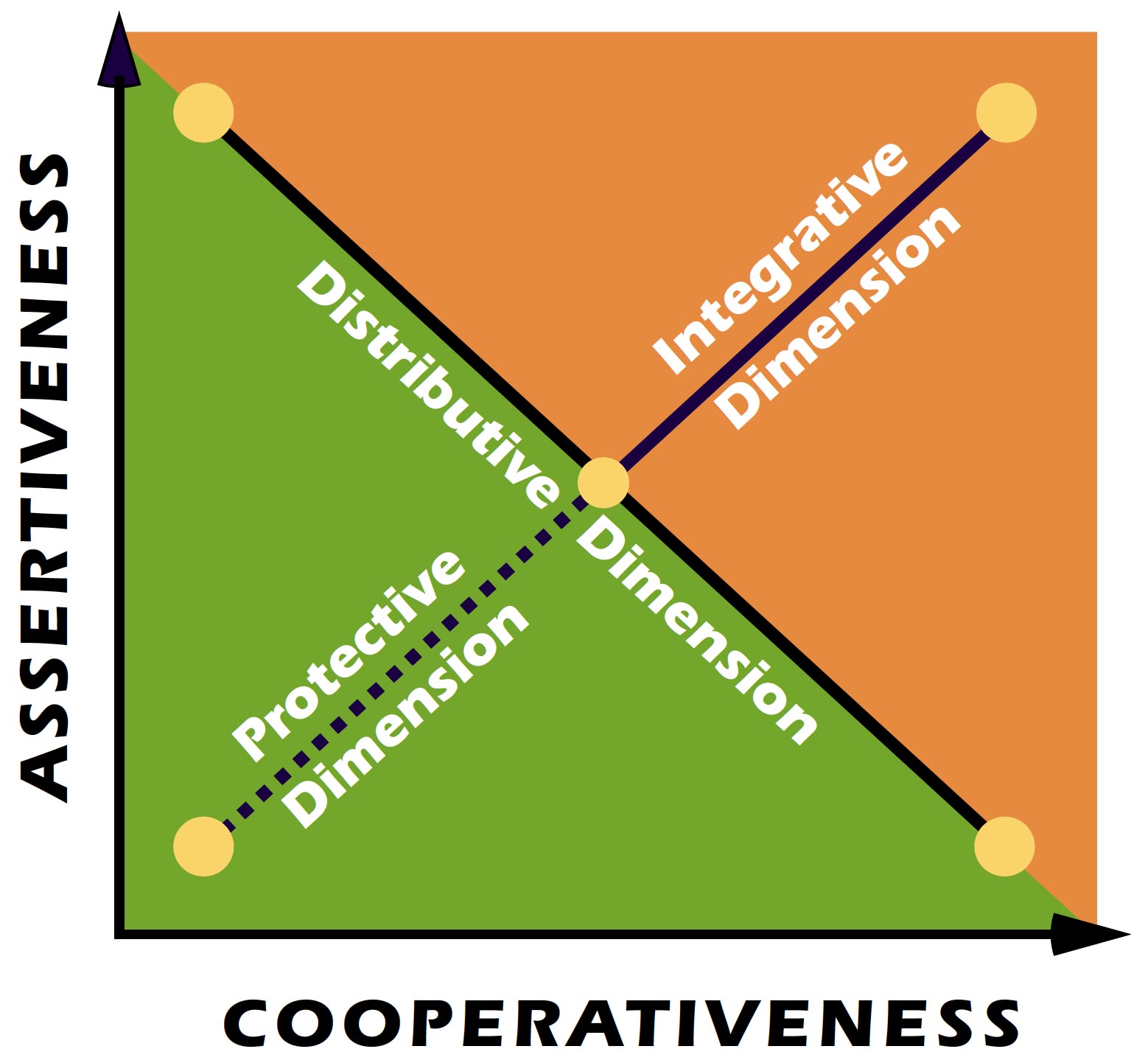05 Jan The Distributive Dimension: Competing, Accommodating, and Compromising
Ralph H. Kilmann, co-author of the Thomas-Kilmann Instrument (TKI)
Competing, accommodating, and compromising all fall on the distributive dimension — on the diagonal from the upper-left mode to the lower-right mode on the TKI conflict model.

Competing is assertive and uncooperative: I get what I want, but you don’t get what you want. Accommodating is just the opposite (unassertive and cooperative): You get all your needs met, but I don’t get my needs met. Compromising is in the middle: We each get part of what we want, but we both remain unfulfilled in other ways.
The common feature with these three modes is their zero-sum, win/lose nature: The more you get, the less I get (and vice versa), since the size of the pie is fixed. Essentially, we slide up and down the seesaw on the distributive dimension, deciding how to distribute the available pieces of that fixed pie. In mathematical terms, competing is when I get 100% of the pie and you get 0%. Accommodating is when you get 100% and I get 0%. Compromising, in its pure form, is when we each get 50% of the pie. But the total of what both of us receive from our resolution always adds to 100.

As is always the case, each conflict mode is effective under a given set of conditions. Competing works best, for example, when the topic is much more important to me than it is to you. Accommodating is just the opposite. And if the topic is only somewhat important to both of us (and we don’t have a lot of time to discuss it anyway), we might as well divide up the pie in equal portions and move on to other matters.
The danger of these conflict modes on the distributive dimension, however, is when a person’s two or three highest modes on the TKI profile are some combination of competing, accommodating, and compromising (while the other modes are assessed as medium or low). In this case, the person can only see his work life and personal life in win/lose, zero-sum terms. Virtually every conflict becomes a tug of war on the distributive dimension. And since the other modes are much lower in usage, the person doesn’t see the larger space that could be created by broadening the topic and thus expanding the size of the pie.
With TKI assessments, I often find that a significant number of people are blindly stuck on the distributive dimension and, therefore, are (1) fully satisfied in some ways, but are losing coworkers, friends, and lovers in the process; (2) are serving other people’s needs, but are rather dissatisfied and unhappy themselves; or (3) are partially satisfied, but are also feeling unfulfilled and empty the rest of the time.
But once people become aware of this behavioral pattern, as revealed by the two or three high modes versus low modes on their TKI profile, that awareness can then lead to dramatic behavioral change…with training, patience, and practice. Sometime later (maybe a few weeks or a few months), a subsequent TKI assessment will reveal a more balanced profile with lower scores on competing, accommodating, and compromising, and higher scores on collaborating and avoiding. Now the person has equal access to all five modes, depending on everyone’s needs and the key attributes of the situation.
Kilmann Diagnostics offers a series of eleven recorded online courses and nine assessment tools on the four timeless topics: conflict management, change management, consciousness, and transformation. By taking these courses and passing the Final Exams, you can earn your Certification in Conflict and Change Management with the Thomas-Kilmann Instrument (TKI). For the most up-to-date and comprehensive discussion of Dr. Kilmann’s theories and methods, see his 2021 Legacy Book: Creating a Quantum Organization: The Whys & Hows of Implementing Eight Tracks for Long-term success.




